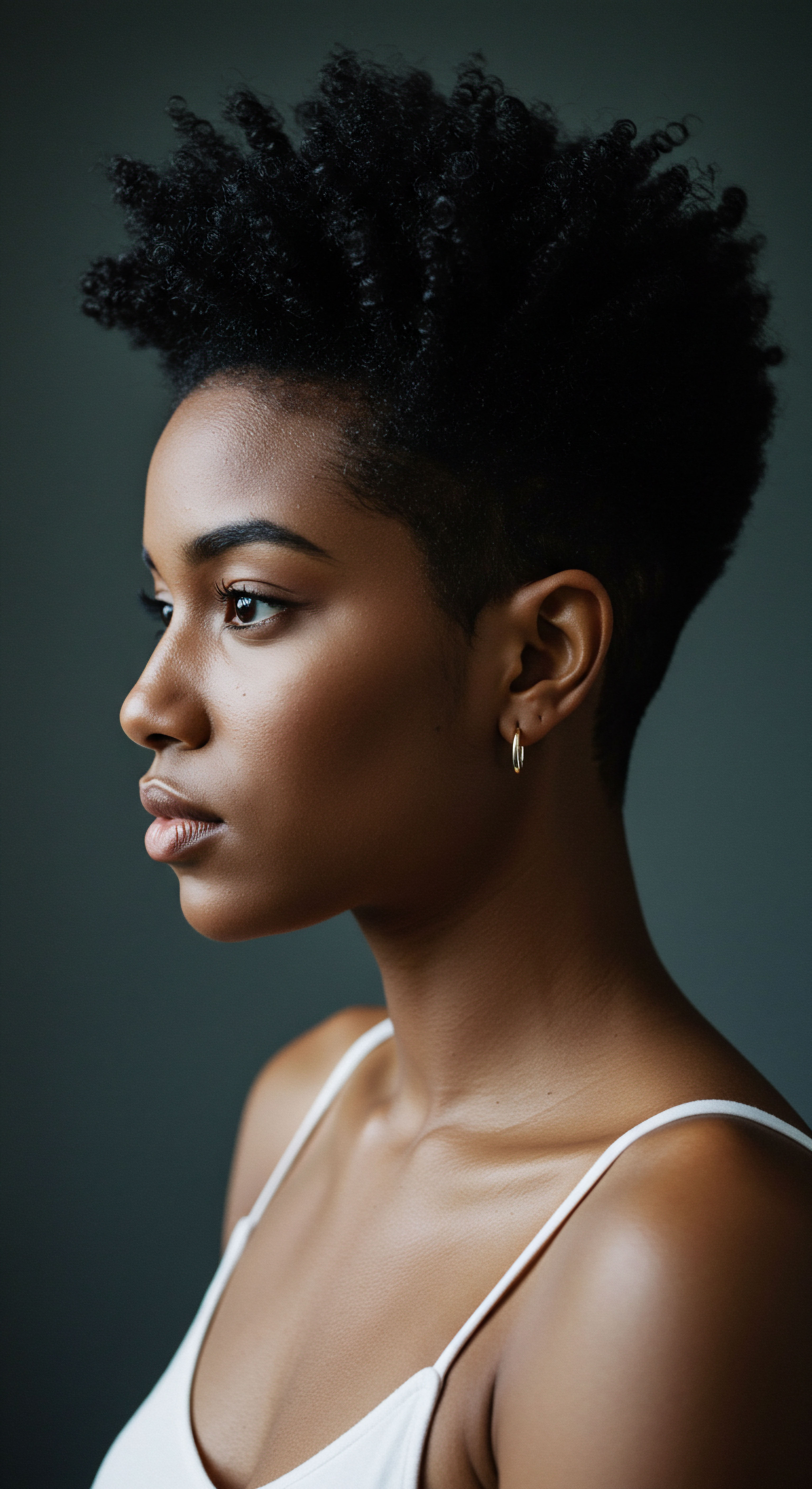
Roots
The whisper of ancient winds carries tales of hair, not merely as adornment, but as a living extension of self, spirit, and community. Before the modern era’s myriad of products and complex scientific explanations, human societies held a profound, intuitive understanding of hair’s place in existence. From the arid plains of Kemet to the verdant forests of indigenous America, hair care was a deeply personal practice, often intertwined with spiritual conviction, social standing, and a direct relationship with the natural world.
This foundational connection, often overlooked in our contemporary routines, forms the very bedrock of understanding how past practices continue to echo in our present textured hair journeys. It is a quiet observation, a gentle beckoning into the elemental wisdom that precedes our current lexicon of curl patterns and porosity levels.

What Did Ancient Societies Believe About Hair?
Across diverse ancient civilizations, hair held immense symbolic weight. In ancient Egypt, for instance, hair was a powerful indicator of social status, gender, and religious belief. Both men and women devoted considerable time and resources to maintaining their hair, frequently adorning it with elaborate braids, beads, and wigs crafted from human or animal hair. These elaborate styles and wigs were not just about beauty; they were potent symbols of opulence and cultural identity, sometimes believed to possess protective and spiritual powers.
Priests, for example, might shave their heads for ritual purity, yet high-ranking priests wore wigs to signify their status. This demonstrates a complex interplay between natural hair, crafted adornments, and societal roles.
For many indigenous cultures, hair carries deep spiritual and cultural significance. Native American traditions often consider hair an extension of one’s thoughts, feelings, and experiences. Long hair was often seen as a connection to the land, ancestors, and spiritual strength. The practice of braiding held particular meaning, with each braid sometimes representing aspects of life such as body, mind, and spirit, or past, present, and future.
Similarly, in Maasai culture, hair served as a visual language, reflecting age, marital status, and social role. These deeply held beliefs shaped how hair was cared for, respected, and presented within the community.
Ancient societies viewed hair as a profound symbol of identity, status, and spiritual connection, dictating intricate care rituals.
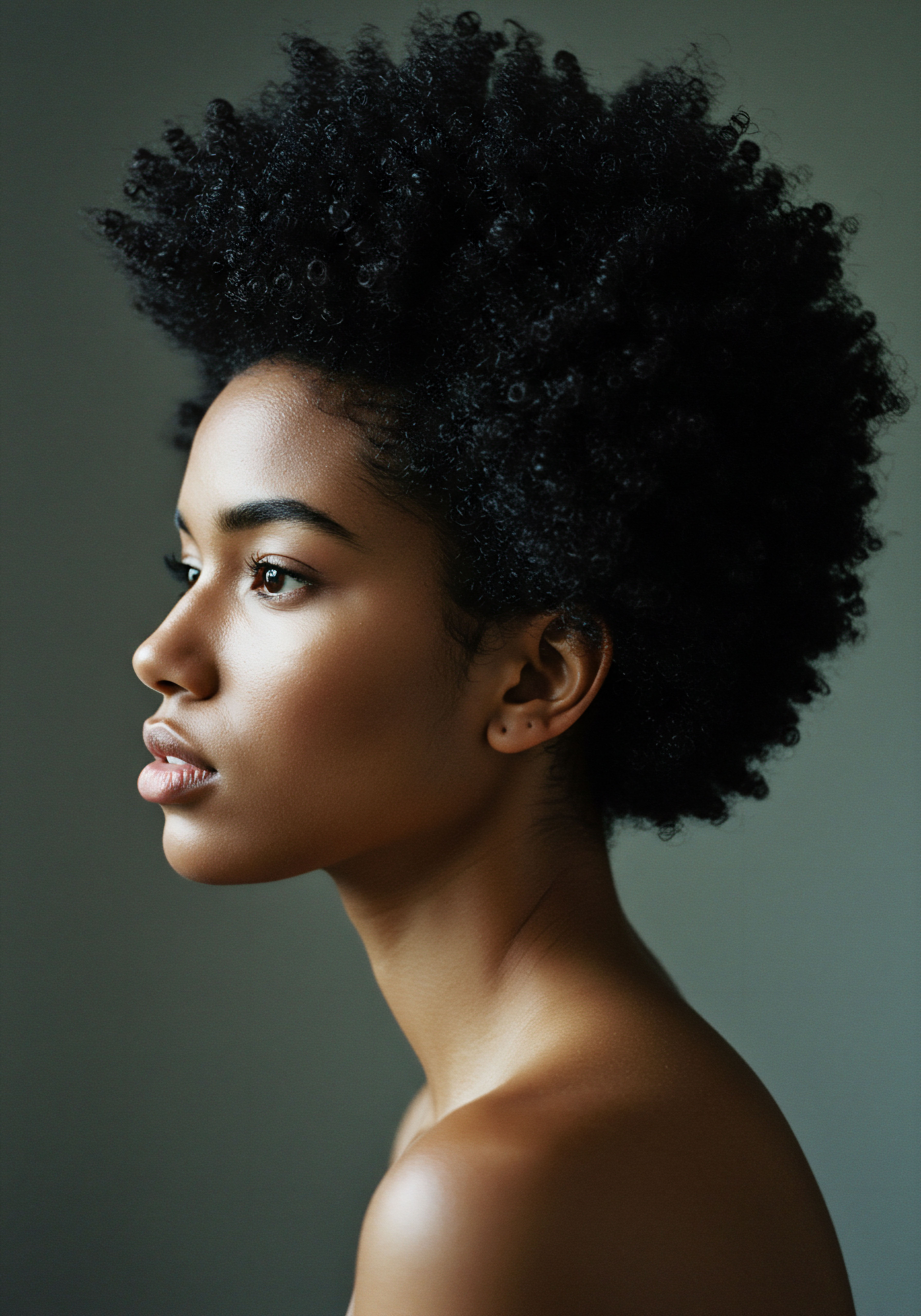
How Did Early Environments Influence Hair Care?
The environment in which ancient peoples lived directly influenced their hair care solutions. In the harsh desert climate of ancient Egypt, individuals sought natural oils like Castor Oil and Almond Oil for their moisturizing and protective qualities, effectively shielding hair from environmental damage. These early formulations, remarkably advanced for their time, harnessed the power of natural emollients to enhance hair’s appearance and health.
Conversely, in West African traditions, where hot, dry climates prevailed, oils and butters were regularly used to keep hair hydrated, often paired with protective styles to maintain length and health. This practical adaptation to climate underscores a universal understanding ❉ hair requires defense against its surroundings. The resourcefulness of these communities in utilizing local flora and fauna to formulate hair care solutions speaks to an innate wisdom about their environment.
- Castor Oil ❉ Widely used in ancient Egypt for its moisturizing and strengthening properties, often blended with honey and herbs to create hair masks.
- Olive Oil ❉ A staple in ancient Greek and Roman hair care, prized for conditioning, adding shine, and nourishing the scalp.
- Shea Butter ❉ A centuries-old West African tradition, used to moisturize and protect hair from harsh environmental conditions.
The very materials available in a region dictated the practices. Clay, plant extracts, and essential oils were discovered for their cleansing properties in civilizations like Egypt and Mesopotamia, setting the stage for later developments in hair cleansing. The persistent use of these natural elements in hair care, from antiquity to the present, demonstrates a deep-rooted understanding of their efficacy, a knowledge passed down through generations.

Ritual
Stepping from the foundational understanding of hair’s essence, we arrive at the practical realm of ancient ritual. This section acknowledges the reader’s pursuit of practical wisdom, inviting a shared exploration of the daily and periodic practices that shaped our ancestors’ hair experiences. It is an exploration of technique, of communal effort, and of the purposeful intent behind each gesture. The routines of old, often performed with a gentle, knowing touch, reveal surprising parallels to the contemporary textured hair journey, where thoughtful application and patient care remain paramount.
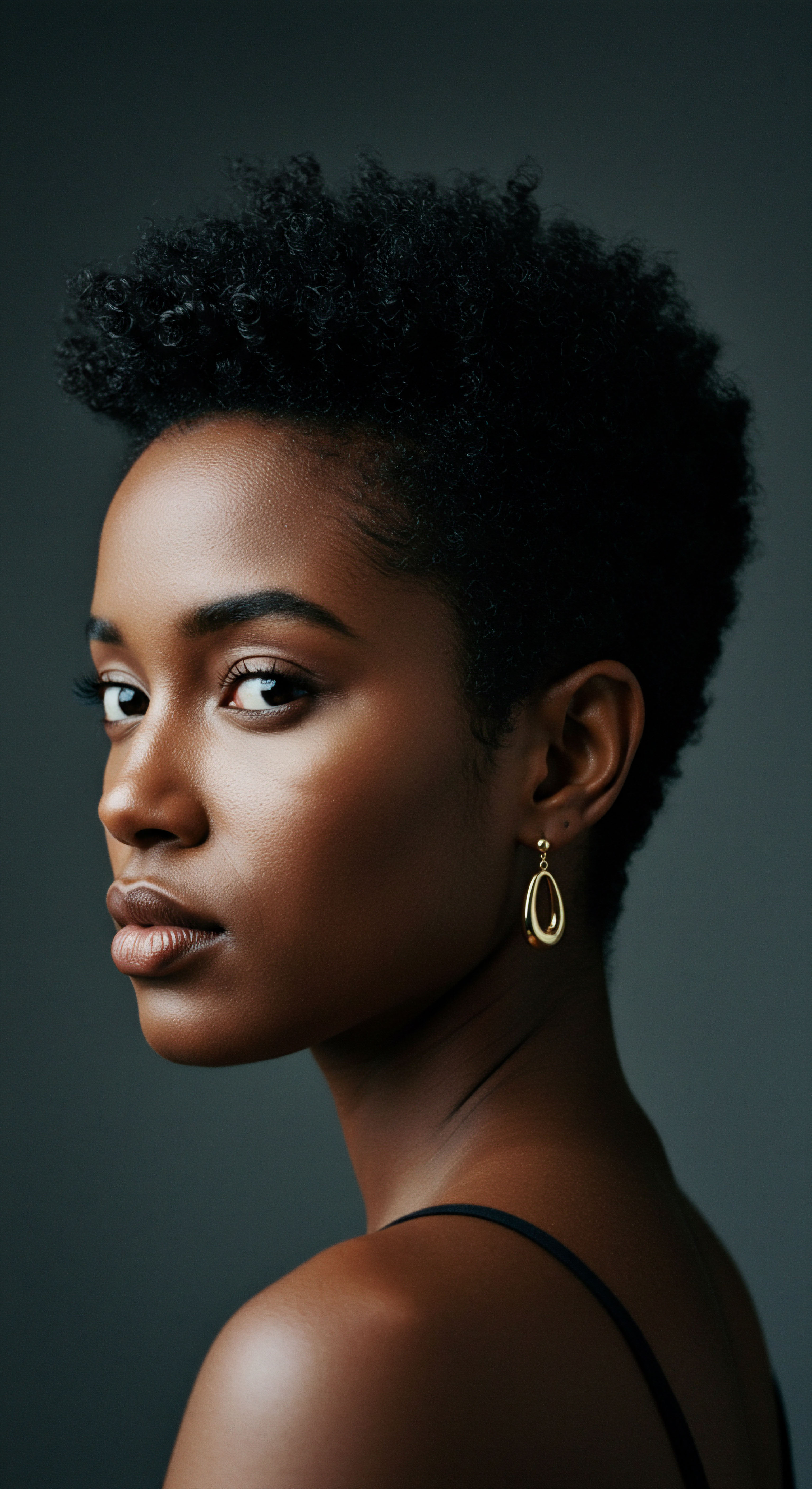
What Were the Daily Practices of Ancient Hair Care?
Ancient hair care was often a meticulous and time-consuming affair, especially for those of higher social standing. In ancient Rome, wealthy women’s hair was tended to by enslaved individuals, whose own hair was often cut short to reflect their lower status. This labor-intensive approach underscores the importance placed on appearance. Roman women commonly controlled their hair with Hairpins, nets, and scarves, and for more elaborate styles, they frequently wore wigs made of human hair, with black hair from India and blonde hair from Germany being particularly popular.
Similarly, in ancient Egypt, the daily routine often included the use of wigs, which played a major role in self-presentation. While the elite wore elaborate wigs, those of lesser means wore their natural hair, which was often a reddish-brown. The presence of curling tongs buried with mummies suggests that styling tools were also part of daily grooming, indicating a desire for specific textures and shapes even in antiquity.
Ancient hair care routines, from cleansing with natural elements to intricate styling, were deeply personal and often communal acts.

How Did Ancient Tools and Techniques Shape Styling?
The tools and techniques employed by ancient civilizations reveal a sophisticated understanding of hair manipulation. Combs, for instance, have been discovered in refined forms dating back 5,000 years in Persia. These were crafted from diverse materials such as ivory, horn, whalebone, and wood.
Archaeologists have even found 2,000-year-old combs made from human skulls, which may have served as amulets rather than styling tools, adding a layer of mystique to these everyday objects. Double-sided combs, with varying tooth widths, were used for both fine and coarse sections of hair, highlighting an early recognition of different hair types and needs.
Ancient Greeks and Romans used heated bronze rods, known as Calamistrum, to create ringlet hairstyles, often followed by an olive oil serum. This early form of thermal styling, while rudimentary by modern standards, demonstrates a desire to alter hair texture for aesthetic purposes. The presence of natural waxes, like beeswax, in ancient Egypt points to their use as styling agents to provide hold and shine, forming a protective barrier against the elements.
One of the most enduring and culturally significant techniques is Braiding. In many African communities, braiding was not merely a style; it was a communal activity, strengthening bonds as mothers, daughters, and friends gathered to create intricate designs. Styles like cornrows, Fulani braids, and Bantu knots have deep roots in African history and were often used to convey social status, tribal affiliation, or even messages, such as maps for escape during slavery. The continuity of these styles into modern textured hair routines is a powerful testament to their efficacy and cultural resonance.
| Ancient Tool/Ingredient Combs (Ivory, Bone, Wood) |
| Ancient Purpose Detangling, styling, hygiene, symbolic use |
| Modern Parallel/Influence Wide-tooth combs, detangling brushes, decorative hair accessories |
| Ancient Tool/Ingredient Natural Oils (Castor, Olive, Almond, Argan, Coconut) |
| Ancient Purpose Moisturizing, conditioning, protection, styling |
| Modern Parallel/Influence Leave-in conditioners, hair oils, deep conditioning treatments |
| Ancient Tool/Ingredient Beeswax, Plant Resins |
| Ancient Purpose Styling hold, shine, protective barrier |
| Modern Parallel/Influence Styling gels, pomades, curl creams |
| Ancient Tool/Ingredient Herbal Rinses (Rosemary, Chamomile, Yucca Root) |
| Ancient Purpose Cleansing, scalp health, shine, subtle coloring |
| Modern Parallel/Influence Herbal shampoos, scalp treatments, natural hair rinses |
| Ancient Tool/Ingredient Calamistrum (Heated Rods) |
| Ancient Purpose Creating curls and waves |
| Modern Parallel/Influence Curling irons, heat styling tools (with heat protectants) |
| Ancient Tool/Ingredient This table highlights the enduring legacy of ancient hair care tools and ingredients, demonstrating how their functions persist in modern practices. |
The communal aspect of hair care also played a significant role. In indigenous communities, grooming and styling hair together was a time for bonding and reinforcing relationships. This shared experience, often accompanied by storytelling and the passing down of traditions, contrasts with the often solitary nature of modern hair routines, yet the underlying desire for connection and shared knowledge remains.

Relay
Moving beyond the fundamental roots and daily rituals, we now consider the profound, often subtle, ways in which ancient hair care practices continue to reverberate through modern textured hair routines. This is where science, cultural memory, and practical application converge, offering a deeper understanding of continuity and adaptation. The query about ancient influences is not a simple historical question; it unearths a complex interplay of biological realities, societal pressures, and the enduring human quest for self-expression through hair. We delve into how age-old wisdom, filtered through generations and scientific discovery, informs the choices we make for our coils, curls, and waves today.
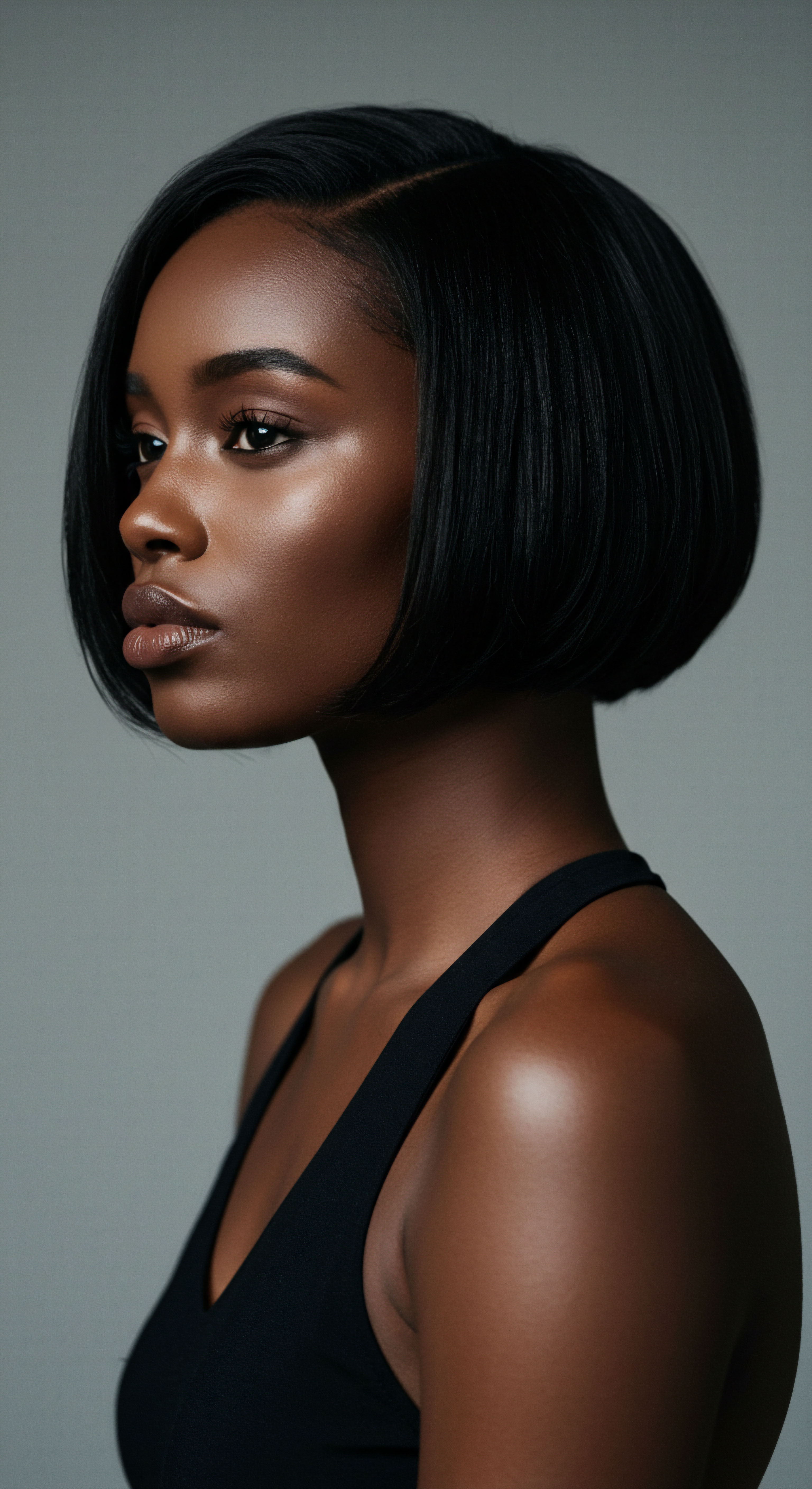
How Do Ancient Ingredients Resurface in Modern Formulations?
The enduring efficacy of natural ingredients used in antiquity forms a powerful link to contemporary textured hair products. Consider Castor Oil, a staple in ancient Egyptian hair care, valued for its moisturizing and strengthening properties. Today, it remains a popular component in hair growth serums, deep conditioners, and scalp treatments for textured hair, celebrated for its density and ability to seal moisture into the hair shaft. Similarly, Olive Oil, revered by ancient Greeks and Romans for its conditioning and shine-imparting qualities, is a common ingredient in modern hair masks and pre-shampoo treatments, particularly for its ability to penetrate the hair and reduce protein loss.
The wisdom of Ayurvedic traditions from India, which date back thousands of years, is another compelling example. Ingredients like Amla (Indian gooseberry), Shikakai, and Neem were used for cleansing, nourishing the scalp, and promoting hair growth. These botanicals are now frequently found in contemporary “natural” or “herbal” shampoos, conditioners, and hair oils designed for textured hair, reflecting a growing appreciation for their holistic benefits and gentle action. The transition from ancient herbal concoctions to modern formulations highlights a selective adoption, where hazardous ancient methods, like lead-based dyes, are replaced with safer, scientifically validated alternatives, while beneficial natural emollients persist.
Beyond the specific ingredients, the very concept of “oiling the hair,” a practice deeply embedded in Indian and West African traditions, finds a strong parallel in modern textured hair care. The practice of applying oils and butters to seal moisture and protect hair in hot, dry climates, as seen in West Africa, directly influences the modern emphasis on moisturizing regimens for curly and coily hair, which is naturally prone to dryness.

Do Ancient Protective Styles Continue to Protect Today?
The concept of protective styling, so central to modern textured hair care, has deep historical roots, particularly within African cultures. Styles such as Braids, Twists, and Locs were not merely aesthetic choices in ancient African societies; they served practical purposes, protecting the hair from environmental damage, facilitating growth, and minimizing manipulation. These styles also carried profound cultural and social meanings, communicating identity, marital status, and tribal affiliation.
Today, these ancient techniques are foundational to textured hair routines globally. The modern natural hair movement, which gained significant momentum in the 2000s, actively reclaims and reinterprets these historical styles. From cornrows to Bantu knots, these styles offer a way to shield delicate strands from daily wear and tear, reduce breakage, and promote length retention.
This continuity is not coincally; it stems from the inherent structural benefits of these styles for textured hair, which remains susceptible to dryness and mechanical damage. The effectiveness of these styles transcends time, proving their utility across diverse environments and social contexts.
A striking example of this enduring legacy is the prevalence of braids. While their historical significance in African societies as a form of communication and resistance during slavery is well-documented—with cornrows reportedly used to map escape routes—their protective qualities remain equally relevant today. This practical application, coupled with their powerful cultural symbolism, makes them a compelling link between ancient wisdom and contemporary practice.
Consider the broader impact of historical hair practices on societal perceptions. A study published in the Journal of Social Psychology in 2017 found that Black women who wear natural hairstyles are perceived as less professional than those with straightened hair in certain professional settings. This enduring bias, a relic of historical attempts to impose Eurocentric beauty standards, underscores the continued importance of reclaiming and celebrating textured hair, a practice with roots in ancient self-acceptance and cultural affirmation. The modern natural hair movement, therefore, stands as a direct descendant of ancient traditions that honored natural hair, now with the added layer of challenging contemporary biases.
- Braids ❉ Ancient African protective styles, including cornrows and Bantu knots, shielded hair from damage and conveyed social meaning.
- Hair Oiling ❉ The ancient practice of applying natural oils for moisture and scalp health, prominent in Indian and West African traditions, continues to nourish textured hair today.
- Herbal Cleansing ❉ Ancient use of plants like shikakai and yucca root for washing hair laid the groundwork for modern sulfate-free and natural shampoos.
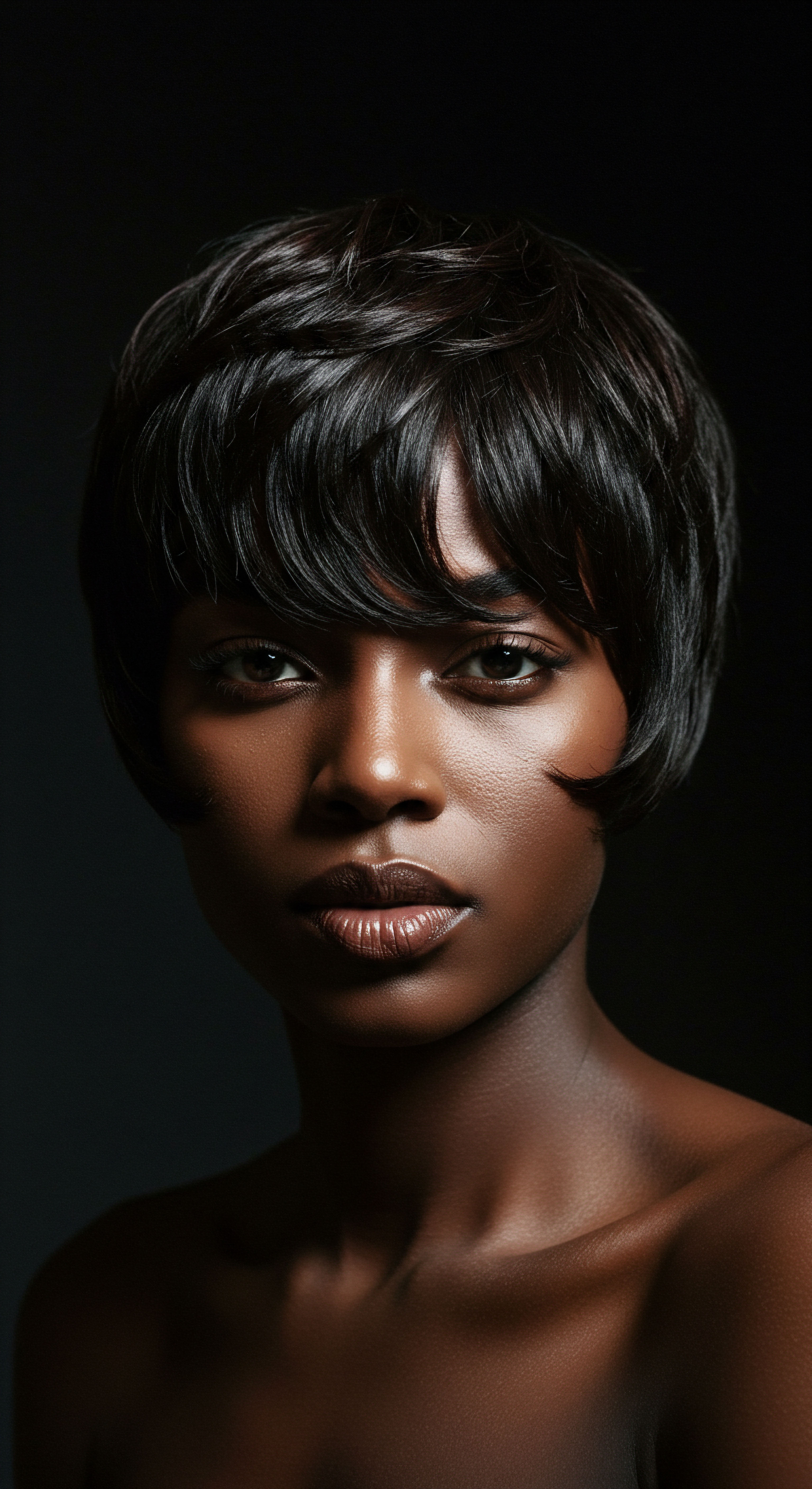
What Modern Routines Reflect Ancient Wisdom?
Many modern textured hair routines echo ancient practices, often with scientific refinements. The emphasis on Scalp Health, for instance, a core tenet of Ayurvedic hair care, where regular scalp massages with herbal oils were believed to stimulate circulation and promote growth, finds its modern equivalent in scalp scrubs, stimulating serums, and targeted treatments designed to create an optimal environment for hair growth. The idea of treating the scalp as the soil from which healthy hair grows is a direct inheritance from these ancient holistic approaches.
The popularity of natural oils like Argan and Coconut Oil in contemporary products is not a fleeting trend; it reflects a rediscovery of their age-old efficacy. While ancient peoples used these oils in their raw forms, modern formulations often enhance their absorption and stability, or combine them with other ingredients to target specific concerns like frizz or damage. This blend of traditional wisdom and modern science is a defining characteristic of current textured hair care.
The practice of Hair Masking, too, bears the imprint of ancient traditions. Egyptians created complex mixtures of natural and animal-derived products for hair remedies, including masks to promote growth and add shine. Today, hair masks, often enriched with botanicals, proteins, and humectants, are a cornerstone of textured hair regimens, offering deep conditioning and repair, much as their ancient counterparts did. The continuity suggests a universal human desire for intensive hair treatments that restore vitality and beauty.

Reflection
The journey through ancient hair care practices reveals more than just a historical curiosity; it illuminates a profound and enduring connection between past wisdom and present routines for textured hair. From the symbolic significance of a coiled strand to the practical application of plant-derived oils, the echoes of antiquity resonate deeply. Our modern understanding of hair health, our appreciation for protective styles, and our reliance on natural ingredients are not isolated innovations but rather a continuum, a living legacy passed through generations.
The subtle gestures of care, the communal aspects of grooming, and the celebration of hair as an expression of identity all find their roots in practices centuries old. This realization invites a thoughtful consideration of our own routines, perhaps encouraging a deeper reverence for the wisdom that underpins the vitality of our strands.

References
- A History of Haircare. Amazingy Magazine, 2024.
- The History of Hairstyling ❉ From Ancient Cultures to Modern Trends. 2024.
- Hair and Makeup in Ancient Egypt. Curationist.
- Haircare Rituals Around the World ❉ Exploring Global Traditions. Orlando Pita Play, 2023.
- Hair Care Secrets of the Past ❉ What Our Ancestors Used for Healthy Hai. 2024.
- The Evolution Of The Natural Hair Movement. Refinery29, 2021.
- The hidden language in your hair ❉ What I learned about cultural identity from 5 ancient hairstyles. 2024.
- Rediscovering Historical Hair Care Practices. Fabulive.
- Hair Care through the ages ❉ Inspired by the past, Designed for the future. Safic-Alcan.
- A Cultural History of Hair in Antiquity. DigitalCommons@Fairfield.
- The History of Haircare ❉ How Past Practices Shape Modern Routines. Kenra Professional.
- The Cultural Significance of Hair ❉ Exploring Different Traditions. BarberSets, 2024.
- Hairstyle in Culture ❉ Traditional Hairstyles from Around the World. Margaux Salon, 2024.
- Roman haircare. Corinium Museum, 2016.
- Understanding Hair Oiling ❉ History, Benefits & More. Cécred, 2025.
- Native Hair Traditions. Notes From the Frontier, 2019.
- The Role of Hair in Culture and Identity ❉ A Brief History. TXTUR.
- History of the Natural Texture Hair Movement By Diane Da Costa.
- Native Ameirican Culture & Beauty Traditions. Know Your Hairitage.
- 9 Ancient Roman Beauty Hacks. History Hit.
- Natural hair movement. Wikipedia.
- Symbolism of Hair Across Cultures ❉ What Hair Means to Us. Yao Secret, 2023.
- Comb. Wikipedia.
- Hair Care Practices from the Diaspora ❉ A Look at Africa, America, and Europe. 2025.
- Viking combs. Research, University of York, 2015.
- History of Hairstyling ❉ From Ancient Tools to Modern Techniques. Tymo Beauty, 2024.
- The Ancient Roman Handbook for Hygiene. Senteurs d’Orient, 2014.
- History of Natural Hair and How it Reflects Black History. Beautycon.com, 2023.
- Shaving, Romans and Facial Hair – Lucius’ Romans. Kent blogs, 2016.
- THE NATURAL HAIR MOVEMENT IN THE ’60S AND ’70S. Black Wall St Media.
- The Legacy of Lathers ❉ Tracing the Historical Use of Natural Ingredien. 2023.
- The Importance of Indigenous Hair In Native Culture. Hair.com By L’Oréal.
- The Significance Of Hair In Native American Culture. Sister Sky, 2019.
- Hair As Heritage. IROKO Theatre Company, 2024.
- A history of… hair products. by Paul Lenz, 2025.
- Exploring Ancient Hair Care Rituals ❉ Timeless Practices for Modern Hair Wellness. Rthvi, 2024.
- Ancient Ayurvedic Hair Masks That Transform Damaged Hair. Learn Canyon, 2025.
- Double-Sided Comb. JHU Archaeological Museum, 2020.
- Ancient Comb Made From Human Skull Unearthed in England. Smithsonian Magazine, 2023.
- A Brief Timeline of Odd Hair Treatments Throughout History. The Cut, 2014.
- The Power of Ayurveda in Hair Care ❉ Ancient Remedies for Modern Concerns. Arak Clinic, 2024.
- Olive Oil Hair Mask Secrets From Ancient Greece. Hairfinity, 2021.
- Ancient Egyptian Anti-Breakage & Repair Antidote Hair Mask. The Mane Choice.